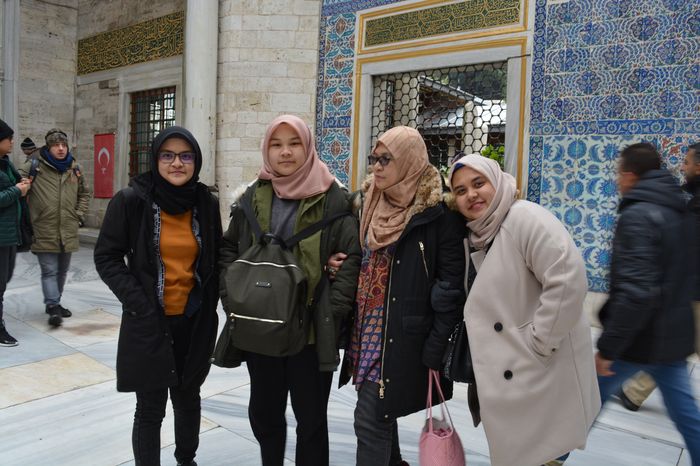The Mystery of Abdul Aziz’s Death
Competing Theories
While the British embassy surgeon officially ruled that Sultan Abdul Aziz committed suicide, many people in the Ottoman Empire believed a different story. The popular theory among the public was that someone else had deliberately cut his arteries and allowed him to bleed to death. This alternative explanation suggests that Abdul Aziz was actually murdered rather than taking his own life.
Questions About the Official Story
The idea that Abdul Aziz was murdered rather than committing suicide raises important questions about the power struggles within the Ottoman court. If this theory is correct, it would mean that powerful people were willing to kill even a former sultan to protect their own interests or advance their political goals.
The Fate of Prince Murad
A Similar Mysterious End?
The author suggests that Prince Murad V, who was declared insane and imprisoned, may have met a similar fate to Abdul Aziz. The implication is that Murad might also have been murdered, despite the official story that he was simply mentally ill and confined to the palace sofia city tour.
The Last Reliable Sighting
The last time any trustworthy witness saw Prince Murad was in the spring of 1877. At that time, he was described as being in an advanced state of paresis, which is a condition that causes severe mental deterioration. According to this report, he had become “a mere idiot,” unable to function normally or pose any threat to the current government.
The Guarded Palace
However, several suspicious circumstances make people doubt the official story about Murad’s condition. The Tcheragan Palace, where he was supposedly being held, has never been opened to visitors since his imprisonment. More importantly, the palace continues to be as heavily guarded as it was when Murad was first confined there. If he had truly died or become completely harmless, why would such tight security still be necessary?
The Wall of Silence
The author notes that only the Sultan’s most trusted eunuchs know the truth about what happened to Murad. These palace officials maintain complete silence about his fate, creating an atmosphere of mystery and speculation. This secrecy fuels rumors and conspiracy theories about what really happened to the former sultan The Ottoman Succession Crisis.
Understanding Ottoman Succession Law
Islamic Law and Royal Inheritance
The Ottoman Empire followed Islamic law when it came to determining who would inherit the throne. Unlike many European monarchies where the crown passed from father to eldest son, the Ottoman system was different and more complex. The heir to the Turkish throne was not automatically the Sultan’s son, but rather his eldest living male relative.
Who Could Inherit
This system meant that the crown could pass to a brother, son, cousin, or any other male relative, depending on who was the oldest surviving male member of the royal family. This law created a much larger pool of potential heirs than the European system, which had significant consequences for palace politics and family relationships.
The Tragic History of Royal Brothers
A Source of Constant Conflict
The Ottoman succession law had been “a fruitful source of conspiracy and tragedy” throughout the empire’s history. Because any male relative could potentially become sultan, there was constant competition, plotting, and violence among family members. Brothers, cousins, and other relatives saw each other as threats to their own survival and potential power.
The Historical Solution Fratricide
In earlier centuries, the Ottoman Empire had developed a brutal but effective solution to this problem. It became customary for a new sultan to order the immediate execution of all his brothers as soon as he took the throne. This practice, known as fratricide, eliminated potential rivals and secured the new ruler’s position.
The End of Legal Brother-Killing
This practice of murdering royal brothers continued for centuries until European public opinion began to influence Ottoman policy. Over the last fifty or sixty years (from the author’s perspective in the late 1800s), pressure from European governments and public sentiment made it impossible for Ottoman sultans to continue this “heroic precaution.”
Abdul Hamid’s Dilemma
The Desire vs. The Reality
The author suggests that Sultan Abdul Hamid II faced the same temptations as his predecessors. It was “generally assumed” that he would like to murder his brothers to eliminate potential threats to his rule, but he no longer dared to do so because of international pressure and changing times.
The Modern Solution Imprisonment
Instead of execution, Abdul Hamid chose a different approach to deal with his potentially dangerous brothers. He kept them as prisoners or under constant surveillance in the many palaces scattered throughout Constantinople. This solution allowed him to neutralize the threat they posed while avoiding the international condemnation that would have followed their execution.
The Miserable Lives of Royal Brothers
The author describes Abdul Hamid’s brothers as “the most unhappy and wretched of all his subjects.” Despite their royal birth and luxurious surroundings, they lived in constant fear and isolation. They knew that their very existence was seen as a threat by their brother, and they had no freedom to live normal lives or pursue their own interests.
The Five Brothers
A Complete List
Abdul Hamid had five brothers, each of whom represented a potential threat to his rule according to Ottoman succession law:
Murad Effendi was born on September 21, 1840, making him the eldest and therefore the most direct threat to Abdul Hamid’s position. As the oldest surviving male relative, he would normally be next in line for the throne.
Mohammed Reshad Effendi was born on November 3, 1844, making him another senior member of the family who could potentially claim the throne.
Kemal Eddin Effendi was born on December 3, 1847, and represented yet another potential heir who had to be watched carefully.
Suleiman Effendi was born on March 12, 1860, making him one of the younger brothers but still a potential threat under the succession law.
Wahid Uddin Effendi was born on January 12, 1861, and was the youngest of the brothers, but even he posed a theoretical threat to Abdul Hamid’s rule.
The Broader Implications
A System That Bred Paranoia
The Ottoman succession system created a situation where family members were natural enemies rather than allies. This system bred paranoia, mistrust, and violence within the royal family, weakening the empire’s leadership and creating instability at the highest levels of government.
The Cost of Survival
For Abdul Hamid, maintaining power meant constantly watching and controlling his own family members. This requirement consumed time, energy, and resources that could have been better spent governing the empire. The psychological toll of living in constant suspicion of one’s own brothers must have been enormous.
A Reflection of Imperial Decline
The tragic situation of the Ottoman royal family during this period reflects the broader challenges facing the empire. Traditional systems that had once worked were becoming problematic in a modern world, but changing them was difficult and dangerous. The fate of Abdul Hamid’s brothers symbolizes the empire’s struggle to adapt to new realities while maintaining its traditional structures and values.







